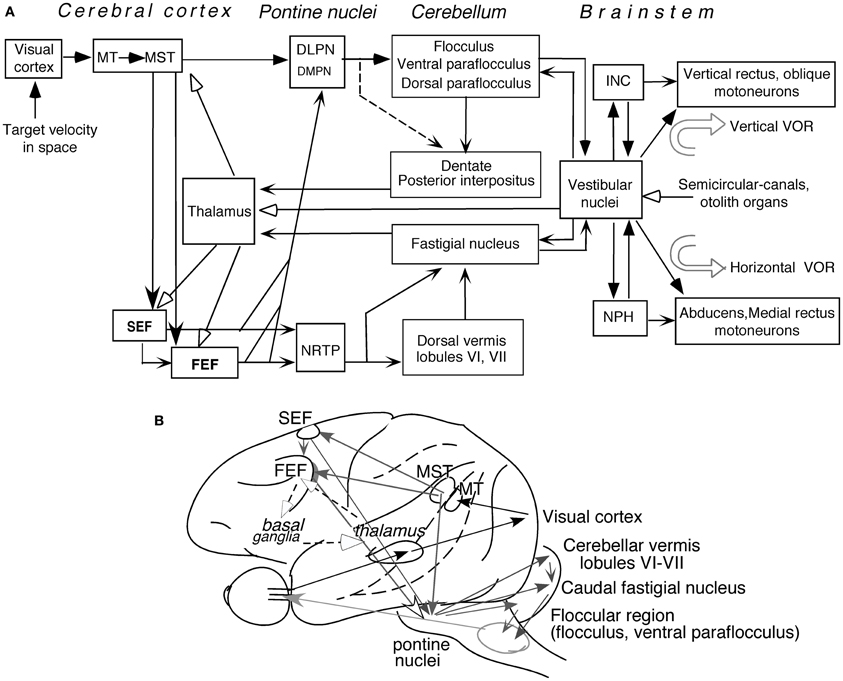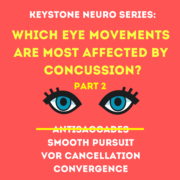Concussion and Eye Movement Series Part 2: Smooth Pursuits

Smooth pursuit eye movements are the ones we use to follow a moving object without moving our heads.
We take it for granted how simple this is, but this eye movement requires the coordination of several brain regions including the parietal lobe, temporal lobe, cerebellum, and multiple brain stem nuclei.

Here’s a ridiculously complex graphic about the brain regions involved in smooth pursuits. It’s insane what goes on in the brain to accomplish such a seemingly simple task. A concussion can disrupt any part of this pathway, or multiple parts depending on the nature of the injury.
It requires us to:
- Predict an object’s velocity – Correct for quick changes in direction
- Maintain focus and attention
- Ignore new and interesting background stimuli

After we hit our heads, any one of these areas can be affected which means different elements of smooth pursuit can become compromised.
Brain injuries can cause our pursuits to become slow, get pulled off target, delay reaction time, or even ignore parts of your visual field.
This can cause problems for athletes who need elite visual tracking abilities like baseball players, wide receivers, and hockey players. But some important notes:
- Smooth pursuit deficits can be completely asymptomtic
- Having poor pursuits isn’t useful diagnostically because many problems including aging can cause bad pursuits
- Smooth pursuit testing needs to be taken on the context of other exam findings to localize the problem in the brain and determine the best method of rehabilitation
While it doesn’t tell us much diagnostically, it can be used as a metric to see how well your brain is responding to #neurorehabilitation.


